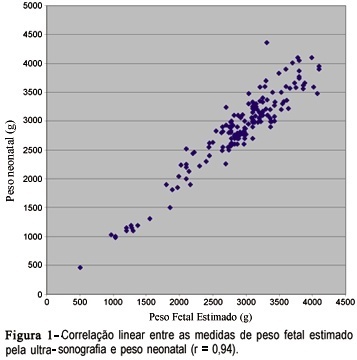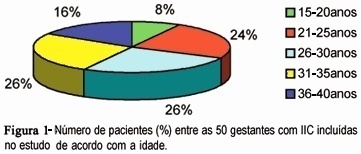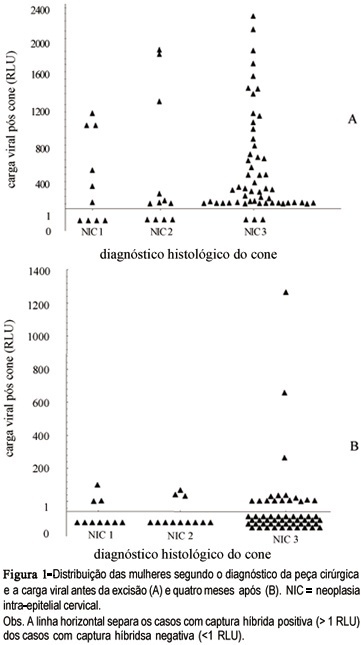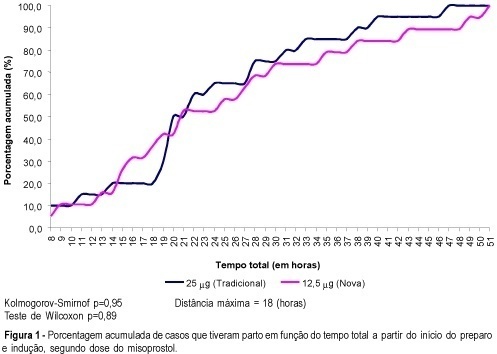Summary
Revista Brasileira de Ginecologia e Obstetrícia. 2003;25(1):45-52
DOI 10.1590/S0100-72032003000100007
PURPOSE: to determine maternal and neonatal outcome according to the application or not of transcutaneous electrical nerve stimulation (TENS) for relief of labor pain before installation of combined spinal epidural (CSE) block. METHODS: a randomized open clinical trial was conducted involving 22 parturients with a singleton, vertex, term fetus, managed in a tertiary-care academic medical center in Recife, Brazil. These patients were randomly assigned to receive or not TENS before CSE block for labor analgesia. Outcome analysis included pain intensity as measured by visual analog scale (VAS), interval between initial evaluation and CSE installation, labor duration, cesarian section and instrumental delivery rate, Apgar scores and frequency of neonatal hypoxia. Statistical analysis was performed using Mann-Whitney and Fisher's exact tests with a 5% level of significance. RESULTS: a significantly prolonged interval between initial evaluation and CSE block was observed in the TENS group (median of 90 min) when compared with the control group (median of 30 min). Duration of labor was similar (about 6 h). No significant difference was found in VAS scores. Cesarian section rate was 18.2% in both groups. There was only one forceps delivery (in the control group). The median of Apgar scores at the 5th minute was 10 and no case of neonatal hypoxia was found. CONCLUSONS: TENS was effective in delaying CSE analgesia installation without affecting pain intensity and duration of labor. There were no adverse effects on mothers or newborns.
Summary
Revista Brasileira de Ginecologia e Obstetrícia. 2003;25(1):35-40
DOI 10.1590/S0100-72032003000100006
PURPOSE: tocompare the ultrasound estimation of fetal weight (EFW) with neonatal weight and to evaluate the performance of the normal EFW curve according to gestational age for the diagnosis of fetal/neonatal weight deviation and associated factors. METHODS: one hundred and eighty-six pregnant women who delivered at the institution from November 1998 to January 2000 and who had one ultra-sonographic evaluation performed until three days prior to delivery with estimation of the amniotic fluid index were included. EFW was calculated and classified in to small for gestational age (SGA), adequate for gestational age (AGA) and large for gestational age (LGA) through the normal EFW curve for this population. Neonatal weight was similarly classified. The variability of the measures and the degree of linear correlation between EFW and neonatal weight, as well as sensitivity, specificity and predictive values for the use of the normal EFW curve in the diagnosis of neonatal weight deviations were calculated. RESULTS: the difference between EFW and neonatal weight ranged from -540 to +594 g, with a mean of +46.9 g, and the two measures presented a linear correlation coefficient of 0.94. The normal EFW curve had a sensitivity of 100% and specificity of 90.5% in detecting SGA neonates and of 94.4 and 92.8%, respectively, in detecting LGA; however, the predictive positive values were low for both conditions. CONCLUSIONS:ultrasound EFW was in agreement with the neonatal weight, with a mean overweight of approximately 47 g, and its normal curve showed a good performance in the screening of SGA and LGA neonates.

Summary
Revista Brasileira de Ginecologia e Obstetrícia. 2003;25(1):29-34
DOI 10.1590/S0100-72032003000100005
PURPOSE: to identify characteristics common to women who suffer from cervical incompetence (CI) allowing their early identification and helping in the follow-up of the gestational-postdelivery cycle. PATIENTS AND METHODS: fifty pregnant women suffering from CI and submitted to uterine cerclage according to modified McDonald's technique were analyzed in an observational descriptive study. The following variables of the medical records were evaluated: age, preceding obstetrical aspects, time of CI diagnosis, cerclage-related aspects and preterm delivery incidence. RESULTS: the average age of the mothers was 29.28 years and mean number of previous gestations was 3.76. As to the preceding obstetrical aspects, 189 gestations with a CI diagnosis were reported and cerclage had been applied to 18 of them, resulting in 18 babies who were born alive (8 preterm deliveries and 10 term deliveries). Of the 171 previous pregnancies in which CI diagnosis was not reported, 90 progressed to abortion, 68 were preterm and 13 were term deliveries. In 30 (60%) patients, CI was diagnosed during the intergestational interval, and 20 (40%) during gestation. The average gestational period in which patients were submitted to cerclage was 18.29 weeks; 40% of the cerclages were emergency procedures and 60% were elective. The incidence of prematurity was 30% (15/50). CONCLUSION: careful obstetrical evaluation of multiparous women, presenting recurrent miscarriages, during the intergestational interval and/or during the first trimester of pregnancy, may allow the early diagnosis and adequate treatment of CI, avoiding prematurity.

Summary
Revista Brasileira de Ginecologia e Obstetrícia. 2003;25(1):23-28
DOI 10.1590/S0100-72032003000100004
PURPOSE: to determine the expression of HER-2 protein in fine-needle aspirates obtained from infiltrating breast duct carcinoma and in the corresponding surgical specimens and to correlate HER-2 expression with histological grade. Methods: forty-eight smears fixed in alcohol and previously stained by the Papanicolaou technique and histological sections of corresponding paraffin-embedded tissue blocks were submitted to immunohistochemistry by the avidin-biotin-peroxidase method using a polyclonal antibody (A0485-Dako). The reactions were carried out simultaneously with antigen recovery. The results were analyzed by a semiquantitative method according to the HercepTest score. Scores of 3+ were considered to be positive. RESULTS: positivity was observed in 39.6% of the smears and in 35.4% of the respective histological sections, with almost perfect cytohistologic concordance (kappa 0.82). The method of evaluation of histological sections was found to be reproducible regarding the smears and standardized the interpretation of the results. The correlation between HER-2 positivity and histological grade was not statistically significant but there was a tendency towards HER-2 expression in less differentiated tumors. CONCLUSION: the positivity of the immunocytochemical reactions observed in smears was comparable to that obtained in the histological sections, indicating that the material obtained by fine-needle aspiration biopsies previously stained by the Papanicolaou technique can be used for the evaluation of HER-2 expression.
Summary
Revista Brasileira de Ginecologia e Obstetrícia. 2003;25(1):17-22
DOI 10.1590/S0100-72032003000100003
PURPOSE: to present a technique of vaginoplasty and evaluate its results. METHODS: twenty women with congenital absence of the vagina aged between 19 and 39 years were included in the study. They were seen at the Endocrinological Gynecology and Climacteric Clinic of the Obstetrics and Gynecology Department of the Santa Casa of São Paulo, between 1989 and 1996. The surgery consisted of the opening of a cavity between the rectum and the bladder and this cavity was lined with a full-thickness skin graft removed from the lower abdominal region and kept in place with the use of a dilatation mold. The donor area was closed by primary suture. RESULTS: morphologically, in 75, 85 and 80% of the cases, the vagina presented a satisfactory epithelial lining, good elasticity and good amplitude, respectively. Functionally, in 80% of the cases both partners considered sexual intercourse satisfactory. CONCLUSIONS: the technique allows the obtention of an adequate vagina from the anatomic and functional point of view, fast healing of the donor area, closed by primary suture with good esthetical aspect and low level of complications.
Summary
Revista Brasileira de Ginecologia e Obstetrícia. 2003;25(1):09-15
DOI 10.1590/S0100-72032003000100002
PURPOSE: to evaluate the detection of high oncogenic risk human papillomavirus DNA (HPV-DNA) immediately before and 4±1.25 months after large loop excision of the transformation zone (LLETZ) in the treatment of cervical intraepithelial neoplasia (CIN). METHODS: in this clinical prospective study, 78 patients submitted to LLETZ from February to December 2001 were enrolled. All patients were submitted to colposcopic evaluation and had Pap smear and hybrid capture II (HC II) specimens collected immediately before LLETZ and four months after the procedure. Statistical analysis was made through odds ratio (OR) calculations with 95% confidence interval (95% CI). RESULTS: before excision, 67 (86%) women had positive HC II for high oncogenic risk HPV-DNA, while four months afterwards only 22 (33%) maintained positive HC II results. Positive results of HPV-DNA after treatment were not associated with previous viral load, compromised margins in the surgical specimen or age. Four months after the procedure, detection of HPV-DNA was significantly associated with cytological abnormalities (OR = 4.8; CI 95%: 1.7-13.7) but not with histological residual disease or relapse (OR = 6.0; CI 95%: 0.8-52.3). CONCLUSION: HPV-DNA detection was significantly reduced after treatment of CIN, but was not associated with the presence of histologic residual disease or relapse.

Summary
Revista Brasileira de Ginecologia e Obstetrícia. 2002;24(10):641-646
DOI 10.1590/S0100-72032002001000002
PURPOSE: to compare the effectiveness and safety of two different doses of misoprostol (12.5 mug and 25 mug) administered vaginally for cervical ripening and labor induction in term pregnancies with an indication for interruption. METHODS: this was a pilot randomized controlled single blinded trial, including 40 pregnant women treated with one of the two different doses of misoprostol. The independent variable was the dose of misoprostol and the main dependent variables were the mode of delivery, time between induction and delivery, perinatal complications and maternal side effects. The main control variables were maternal age, gestational age, literacy, parity, skin color and conditions of the cervix at the beginning of induction. For data analysis Student's t test, chi2, exact Fisher, Wilcoxon and Kolmogorov-Smirnof tests were used, besides survival analysis. RESULTS: the groups using 12.5 and 25 mug were similar and did not present any significant difference regarding time for onset of uterine contractions (20.9±20.4 and 16.6±9.8 h, respectively), time between onset of uterine contractions and delivery (7.8±3.4 and 6.9±5.0 h), vaginal delivery (65 and 80%) and maternal and perinatal side effects (similar Apgar scores and hyperstimulation syndrome in both groups). CONCLUSION: the higher percentage of vaginal births and the shorter time for delivery using 25 mug, although not significant, does not allow to recommend the dose of 12.5 mug as more advantageous for cervical ripening and labor induction in term pregnancies.
